Before launching into my first Twisted Stave blog post, I want to give thanks where it’s due and provide a little stage setting. Success—no matter how you define it—takes some measure of graciousness and Clay certainly measured up in inviting us misfits here to share his space. Thanks, Clay.
In my 2016 book, “A Traditional Bowhunter’s Path,” I attempt to describe what it means to be a traditional bowhunter—what it means physically, emotionally, and philosophically to limit one’s self to a stick and string. I also propose that traditional bowhunter’s, through what I call Traditional Spirit, have a unique opportunity to carry the hunter-conservationist torch.
For my first run here at Twisted Stave, I’m going to draw from a Traditional Bowhunter’s Path to give you a two-part blog post on these topics. For later posts, I think I’ll lighten things up with a campfire story or two.
The Traditional Spirit, Part I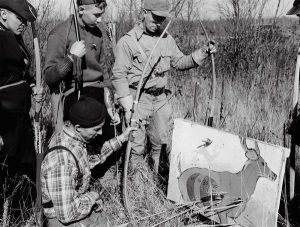
I often wonder what the average person sees in their mind’s eye when they picture a traditional bowhunter. Do they see the great archery innovator Fred Bear grinning at them from under his trademark Borsalino hat? Or, maybe it’s that do-gooder Robin Hood stealing from the rich and giving to the poor. What about the chiseled Howard Hill with his signature back quiver and American style longbow? Possibly it’s the always impeccably dressed duo of Saxton Pope and Art Young. For many, it’s likely not someone of European descent at all, but rather a Comanche shooting a stubby ash flatbow from beneath the neck of galloping “paint.” Or perhaps it’s a crouching Seneca sighting down his dogwood arrow at a tom turkey strutting in a stand of sun-dappled hemlocks. Or, it’s just as likely that many people don’t picture any of these images because they don’t have a perspective to distinguish traditional bowhunting from any other sort of hunting.
For an entire human generation, from the early-1970s through the mid-1990s, traditional archery was in a very deep slumber and on the verge of disappearing all together. The decline and near extinction of traditionalists was brought on by the rapid growth and popularity of the compound bow, which took over the archery industry after being introduced in the early 1970s. The term traditional archery was coined to refer to archery methods practiced before the compound bow came into wide use. Today, traditional bowhunting is enjoying a strong resurgence that is being fueled by Americans wishing to return to a simpler, less gadget filled life that reconnects them with something “real.” As evidence of this, one needn’t look any further than the local food and back-to-the-land movements, the proliferation of do-it-yourself websites, and the popularity of everything retro. I think it is a combination of these motivations that is causing people of all stripes, including large numbers of young, urban “hipster hunters,” to seek out traditional bowhunting. So, what is traditional archery today and what does it mean to hunt in a traditional way?
Most would agree that traditional bowhunting involves the use of vertically held bows, such as longbows or recurves, that use a single string and offer no mechanical aids, like pulleys or levers for drawing the bow. Beyond that; however, the use of equipment alone to define what it means to be a traditional bowhunter becomes ineffective at best.
I once ran into an old bowhunter on a Wildlife Management Area in northeast Oklahoma. His weathered cheeks held deep, curving creases like the lines on a hickory nut and his knotted old knuckles bespoke of hard work and pain. I guessed that he was in his eighth decade, but he could have just as easily been a weathered 60. One thing was for sure, he had been at the game of bowhunting for a very long time. He wore a felt hat, plaid wool shirt, and had a leather back quiver full of carbon arrows slung over his shoulder. In his left hand rode a Bear Kodiak recurve with a single sight pin protruding from the riser. By contrast, I was carrying a handmade osage selfbow fitted with a bow quiver, containing three neatly made ash arrows, and I wore a head-to-toe outfit of modern camouflage. Who was the traditional bowhunter? Despite the fact that his bowhunting life predated the compound bow, did this old bowhunter’s sight pin and carbon arrows disqualify him from being traditional? What about my unorthodox use of a bow quiver on a selfbow or my fancy camo duds? As you can see, any strict definition based only on equipment or shooting style is bound to fail.
Resisting certain gear and technologies in favor of maintaining the traditional way plays a substantial role in what it means to be a traditional bowhunter. It’s a ridiculous notion to suggest that we, as traditionalists, should reject all innovations. That would surely drive us to stagnation and eventual extinction. For example, carrying a cell phone when hunting alone is common sense, not a rebuke of tradition. The state of being new is not the problem in and of itself, or at least it shouldn’t be. A thing that is new only becomes bad if it somehow cheapens the hunt or defies the basic ideology of what it means to be a traditional bowhunter. So why do traditional bowhunters cling to old ways when there are certainly more effective ways to put meat in the freezer? I think it’s in our DNA to revel in the past and challenge ourselves to meet the world as our ancestors did.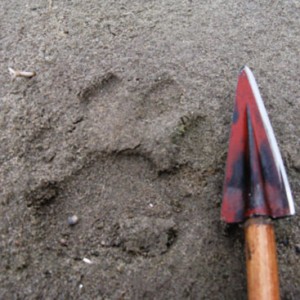
Adoption of extreme technology in place of practiced skill only layers an ever-thickening barrier between hunters, the natural world, and the ritual spirit of hunting. When we allow our time-honored skills as archers and woodsmen to be replaced by commercial gadgets designed and hocked to make our enterprise quick and easy, we become disengaged intruders on otherwise wild places. Where we once walked shoulder to shoulder with other predators, we now rumble in, take what we want without preparation or skill, and rumble out. For validation of this, you needn’t look any further than most commercial hunting shows on television.
If maintaining the primal customs of bowhunting satisfies our busy brains, it’s certainly the thrill of traditional bowhunting that likewise rocks our hearts. A hallmark of traditional bowhunting that sets it apart from nearly all other forms of hunting is the need to get very close to our quarry. Some hunters choose to challenge themselves by limiting their interests to trophy animals. Traditional bowhunters achieve this challenge by limiting technology, which means it’s not about how far you can shoot—it’s about how close you can get! This requires tremendous woodsmanship, patience, a steely nerve, and a deep knowledge of wildlife ecology and behavior. You haven’t hunted until you’ve been near enough to see the liquid of a doe’s eye or smell the meaty presence of a bear.
Traditional bowhunting is far more about what we carry in our hearts than in our hands. Having been in the traditional archery community for more than 20
years, I can tell you that there are strong, unwritten values that traditional bowhunters pride themselves in following. There is a common peer-to-peer driven expectation within the traditional community that its members will adhere to the highest standards of conduct, fair chase, and land conservation. I call this the Traditional Spirit. I want to be clear about something. I am not saying that traditional bowhunters are unique amid the hunting community in having high values. This is not about dividing our ranks or disparaging others. All forms of hunting have many fine and ethical members. I have many friends, who I respect immensely, that hunt with a rifle or compound bow. What I’m saying is that this Traditional Spirit is unusually widespread and steadfast within the traditional bowhunting community.
Having Traditional Spirit means doing things the honorable way, which is often the hard way, even when easier, but less noble options are available. It means treating wildlife, fellow hunters, and non-hunters with respect. The Traditional Spirit is more than just an ethic, it’s a way of being that cannot be summed up by simply adhering to a code. It’s about honing our craft as woodsmen and immersing ourselves in the ebb and flow the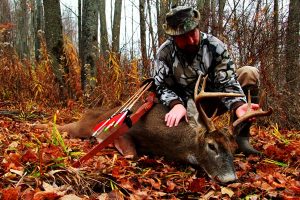 natural world.
natural world.
There are many problems associated with mainstream hunting today, but I’m happy to say that I see the traditional bowhunting community as part of the solution, not the problem. In Part II of this post, I’ll address some of the challenges that hunting faces, but for now, the point I want to make is that traditional bowhunters, through their high standards, have a chance to make a real difference in the pursuit of conservation and protection of our hunting heritage.
Keep the Traditional Spirit Alive!
Ron
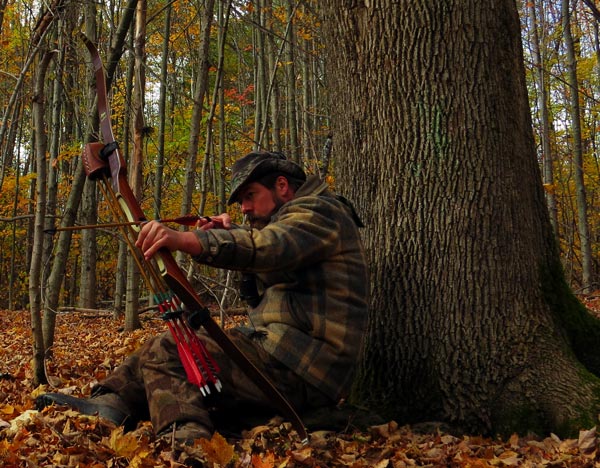
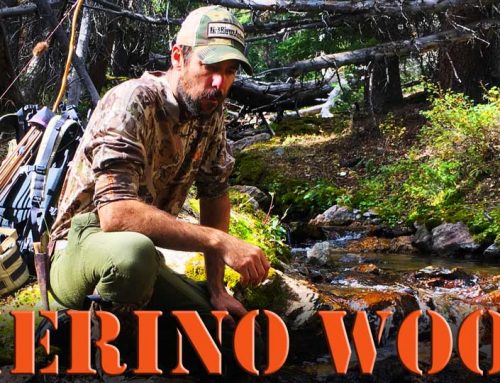
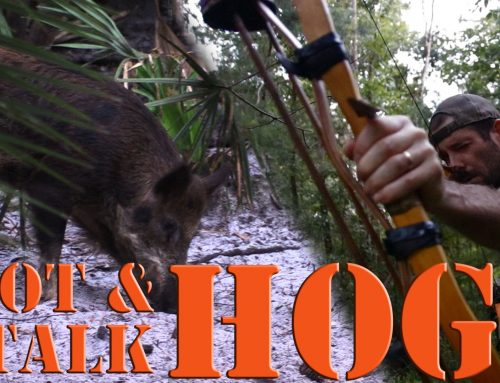
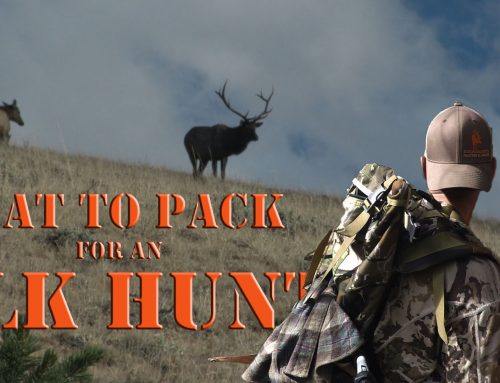
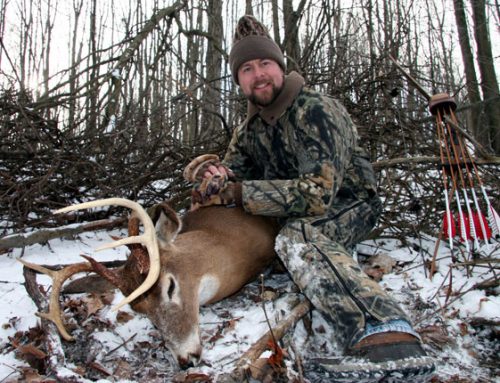
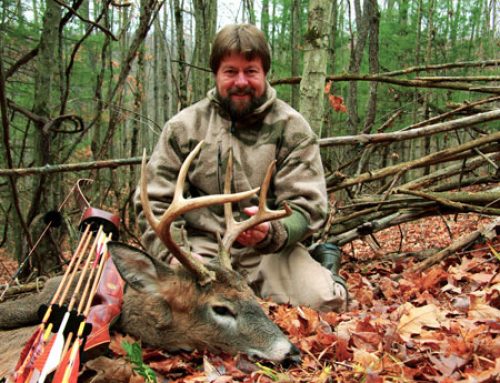
Great first post! In the words of composer Gustav Mahler, tradition is not the worship of ashes, but the preservation of the flame. Thanks for keeping the flame going.
Thanks for helping to define the real traditional Bowhunter,who is approaching the challenge not with a specific type of weapon,but with a heart for challenge and adventure and respect.
This is a great article that spoke to my heart. Ron really put into words how most of us feel about traditional archery. Hunters are a family yes but I must say traditional archers are like immediate family.
well written and I OK forward to the next blog.Elliott
After living a lot of years I have figured out that being traditional is a “state of mind” rather than simply the equipment one chooses to use.
Excellent Ron I Look forward to seeing more of your work on this blog
What a great read!
Eloquence doesn’t escape you bow brother . There is often a bound formed from one trad archer to the next , one of respect , honor and admiration for the archer second but for our quart first . For ours are time honored honed skills not created to be the best ” marksman, no but to challenge ourselves and our quart to a time that in a blink is shared then over only revisited in our journals or minds . Great blog ! Got me reminiscing
Well said.
Well written Ron. Look forward to more of your posts.
Great message Ron. Well thought out and well written It goes right to the core of our being….
good read my fellow bowman
Thanks Ron for helping to keep the Traditional Spirit alive. As a side note, I found your book to be an excellent read with a lot of great information as well.
Before I could even read of Bear, Hill, Pope and Young etc…..I was a wild ass Indian, and today, being a traditional bow hunter is still being a wild ass Indian!!
Well said. Well written
Thanks to all for the positive comments! I truly appreciate the feedback. Gene, it’s great to see you on here.
Keep the Traditional Spirit Alive!
Ron
Well said Ron. It’s up to each of us to define who we are as part of the traditional culture and we need to support each other in that process. PK
Ron,you did a great job expressing the philosophy and reasons for Traditional archery and bowhunting. I’m looking forward to more of your blogs.
I would second what Gene said. I hunt to have fun and hunting with my longbow and cedar arrows is fun
I agree ron traditional archery has nothing to do with what clothes you wear or if you use wood or carbon arrows or in what kind of quiver you put those arrows,traditional archery is in your heart and the best thing we can ever do is pass it on to a kid weather it’s you’re own yung’un a nice or nephew, I was fortunate enough to be able to spend a lot of time with my great grandfather and he gave me my first fiberglass bear bow in the 70’s I had bought every .25cent cedar arrow the hardware store had and with a big o’l whelp on my fore arm and smile on my face I was one happy six year old and to this day when I ain’t in the woods hunting I like to take my bear grizzly out with one arrow and a judo point and shoot at twigs and dandelions not only is it good exercise and helps train the mind to automatically judge distance it’s good for my soul and a whole lot of fun to boot. This has been a great post Ron it really encouraged me to reflect on how I became a traditional archer and how I can do my part to preserve it, Thanks…
Well done I enjoyed reading and look forward to the
Very well said, Ron! Traditional archery is fortunate to have you as one of its vocal ambassadors. I can testify that your dedication is authentic. Your open minded, thought provoking views may just shed light upon the value of a hunt that includes self imposed limitations to increase satisfaction to those who currently rely upon easier ways. I’m looking forward to part 2!!
Awesome first post keep up the great work
A great read Ron, looking forward to your words and the journey,
Cheers Wayno
Great article Ron…
Wonderfully written. Looking forward to part 2.
Great article. You wrote about some of the things that are just hard to explain to most hunters that are not traditional. I hunt with some And respect their way. Can’t wait until you post more. Where can I get your book?
McClura
Oklahoma Selfbow Society
A great read and looking forward to Part II. Traditional Only!!! Have a blessed week!!!
Ron this was well wrote and a very good article on traditional archery.Also like to thank Clay for having brothers of the bow like you on the site.
Great post! Keep the traditional spirit alive. Pass it on!
Really enjoyed the read, and appreciate the perspective. I’ve diverged from my hunting family in terms of equipment(homemade selfbows instead of modern rifle) but hold no view of superiority over those who choose other methods, as long as they strive to be ethical and respectful of game, land and people.
Well said!….looking forward to your next post
Wonderful
[…] These thoughtful and innovative hunters—and thousands more whom I unfortunately have no space to acknowledge—are breathing new life into the conservation ethic and winning the respect of Americans by proudly flying a flag of Traditional Spirit that’s impossible to miss. Internationally recognized hunter-conservationist Shane Mahoney has said that the hunter-led conservation movement of the late nineteenth century was “the last act of American genius.” At first this might sound shortsighted. What about putting a man on the moon, inventing the internet, or mapping the human genome? Weren’t those acts of genius? But then again, maybe Mahoney is right. None of those accomplishments could have happened without clean air, clean water, and ample natural resources. Had hunters remained on the sidelines more than a century ago, we might have persisted on our destructive path of taking what we wanted without regard for sustainability or the notion of conservation. If not for hunters, we might not be here today, and even if we were, we’d lack our capacity to do great things. When considered from Mahoney’s point of view, the gravity of our responsibility as traditional bowhunters to uphold “the last act of American genius” becomes clear. Let’s build on the legacy handed to us by restoring public trust in hunters and forever protecting our wild places with the power of the Traditional Spirit! […]
[…] The keys to successfully hunting bedding areas are to: 1) scout smart by using aerial photos or Google maps, and limiting your intrusions to winter and early fall, 2) minimize disturbance by selecting large bedding areas with plenty of core area to harbor bucks, 3) hunt smart by using the weather, especially the wind, to hide your presence, 4) maximize shot opportunities by setting up on key features such as food and natural funnels, and 5) rest bedding areas by backing off after knowingly disturbing deer. Give it a try. It’s fun, productive, and the whitetail gods won’t strike you down for not following the “rules.” Click here for more great posts by Ron Rohrbaugh! […]
Nicely done Ron. It is always a pleasure to read someone else ‘s sense of values that align with my own. I am approaching my winter years and have only found bow hunting in the traditional method within the last 5 years. For me it has brought a sense of peace and fulfillment. Not to say I look down on others and their form of hunting devices because I do not. I came from that realm and have many friends there. I respect a man or woman for their values and in their values it shows what type of hunter they are. Not what they use for a hunting weapon.
Great artcle, a true expression of traditional values. Keep up your great informational skills as they are greatly appreciated.